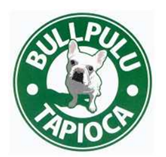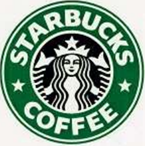Are trademarks with a “green outer ring” all Starbucks? An Analysis on Japan Intellectual Property High Court 2021 Gyo-Ke No. 10170 Judgement
Date: 6 May, 2021
【Volume 44】
Trademark designs often consist of similar design elements like square and round frames, and badges to elevate the fame of trademarks and to impress the consumer. However, when determining whether a likelihood of confusion exists, it depends on if consumers can identify the source of goods and services through the distinguishing parts of trademarks, instead of similar designing elements adopted in the trademarks. In such circumstance, the classification of “design element” and “distinguishing part” in a trademark would be an important legal issue. Reiwa 1st year (2021) Gyo-Ke No. 10170 Judgement1 made by the Japan Intellectual Property High Court aims to clarify the determination of graphical and word elements of the trademark.
Case Fact
Bull Pulu Corporation (“Bull Pulu”) is a beverage chain in Japan who registered the trademark “Bull Pulu TAPIOCA” (“the Contested Trademark”) at the Japan Patent Office (“JPO”) on March 9th, 2016, and the application was approved on December 9th, 2016.
Starbucks Corporation (“Starbucks”) then filed an opposition against the Contested Trademark. Starbucks claimed that the Contested Trademark is similar to the trademark it possessed (“the Earlier Trademark”) and requested JPO to revoke the registration of the Contested Trademark. JPO found both trademarks are not similar and dismissed the opposition.
Starbucks then filed the suit for cancelling the JPO decision before the Japan Intellectual Property High Court. The court found that the two trademarks are not similar and maintained the decision made by JPO.
Contested Trademark and Earlier Trademark
| Contested Trademark | Earlier Trademark | |
|---|---|---|
| Trademark |  |
 |
| Registration Date | December 9th, 2016 | October 1st, 2004 |
| Trademark Holder | Kabushiki Kaisha Bull Pulu (“株式会社 Bull Pulu”, Bull Pulu Corporation) | Starbucks Corporation (“スターバックス・コーポレイション”) |
| Description of Goods and Services | Class 29
Dairy products with tapioca flour. Class 30 Coffee with tapioca flour; cocoa with tapioca flour; desserts with tapioca flour; tapioca flour; edible tapioca starch. Class 43 Restaurant services, etc. |
Class 18
Purses; umbrellas; fur, etc. Class 25 Jackets; hats; shoes, etc. Class 30 Coffee; other candies and bread, etc. Class 43 Restaurant services, etc. |
Starbuck’s Argument
Starbucks claimed that the Cited Trademark and its green outer ring had already been famous before the application date of the Contested Trademark. According to the result of a consumer survey provided by Starbucks, more than 80% of the respondents associated the green outer ring and white words ( “ ” ) with Starbucks. Such fact proves that the green outer ring is one of the distinguishing parts of the Earlier Trademark. Hence, the Contested Trademark with an identical green outer ring is similar to the Earlier Trademark, and it is likely to cause the confusion of relevant consumers.
” ) with Starbucks. Such fact proves that the green outer ring is one of the distinguishing parts of the Earlier Trademark. Hence, the Contested Trademark with an identical green outer ring is similar to the Earlier Trademark, and it is likely to cause the confusion of relevant consumers.
Summary of the Japan Intellectual Property High Court Judgement
However, the court did not agree with Starbuck’s argument. The court’s reasoning is summarized below:
- Although the picture of the green outer ring
 presented in the consumer survey was blurred, the survey was suspected of intentionally misdirecting the respondents. As such, Starbuck’s survey evidence could not establish the fame of the green outer ring.
presented in the consumer survey was blurred, the survey was suspected of intentionally misdirecting the respondents. As such, Starbuck’s survey evidence could not establish the fame of the green outer ring. - The court reasoned that the green outer ring is merely a conceptual design element, and the words and graphics on the Contested Trademark’s ring were not “STARBUCKS / COFFEE” and stars respectively. The consumers cannot separate the Earlier Trademark’s design concept and identify the green ring solely. Therefore, the green outer ring is not a specific component of the Earlier Trademark.
- In conclusion, the main distinguishing part of the Contested Trademark is “BULLPULU”, and that of the Earlier Trademark is “STARBUCKS”. The court opined that there is no likelihood of confusion as the two trademarks under comparison are visually, aurally and conceptually highly dissimilar.
Wisdom Suggested Strategies
When comparing the design elements of both trademarks, they both have a green outer ring, a graphic element encircled by the ring, and white words on the ring. There seems to be imitation in the design of the Contested Trademark. Therefore, Starbucks claimed that a likelihood of confusion exists between the two trademarks, and the Contested Trademark should be revoked.
In Japan, the distinctiveness of trademark relies on consumers’ perception instead of the designing elements in the trademarks. This is further proven by the statutory basis for a refusal to register due to likelihood of confusion:
(1) Trademark that is identical with, or similar to, another person's registered trademark which has been filed prior to the filing date of an application (Subparagraph (XI), Paragraph (1), Article 4, Japan Trademark Act); and
(2) Trademark that is likely to cause confusion in connection with the goods or services pertaining to a business of another person (Subparagraph (XV), Paragraph (1), Article 4, Japan Trademark Act).
For all the reasons above, the Japan Intellectual Property High Court pointed out clearly in this judgement that, first, even though both trademarks contain a green outer ring, the ring itself is nothing more than a design element which cannot be independently identified by the consumers. Second, consumers can identify the sources of goods of both trademarks through recognizing the main distinguishing part “BULLPULU” of the Contested Trademark and “STARBUCKS” of the Earlier Trademark. Thus, the Earlier Trademark does not constitute the basis for a refusal to register the Contested Trademark under the Japan Trademark Act.
[1] 知的財産高等裁判所 令和 1年 (行ケ) 10170号 審決取消請求事件
Keywords: Trademarks Case Studies Japan Likelihood of Confusion Definiteness






